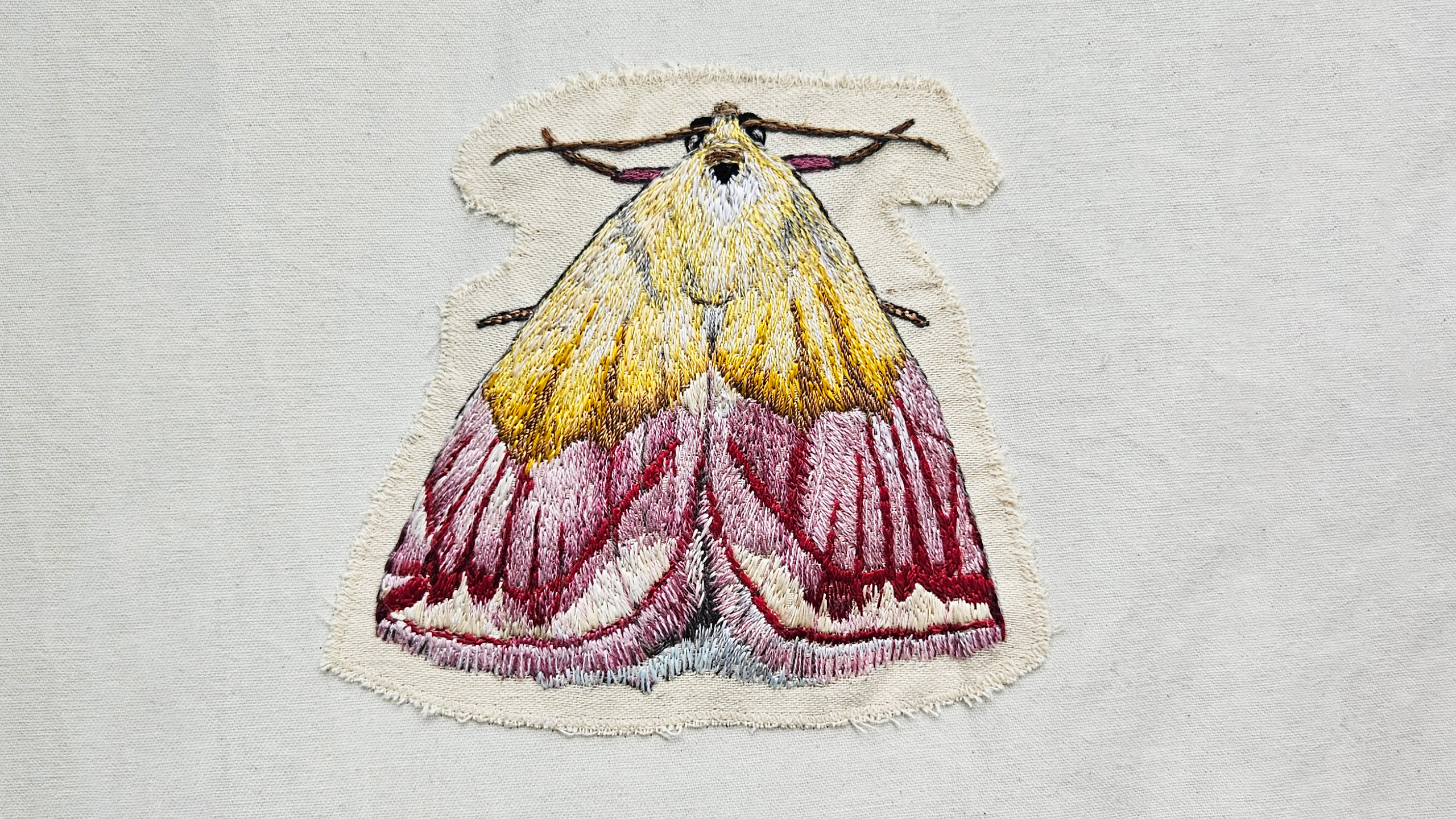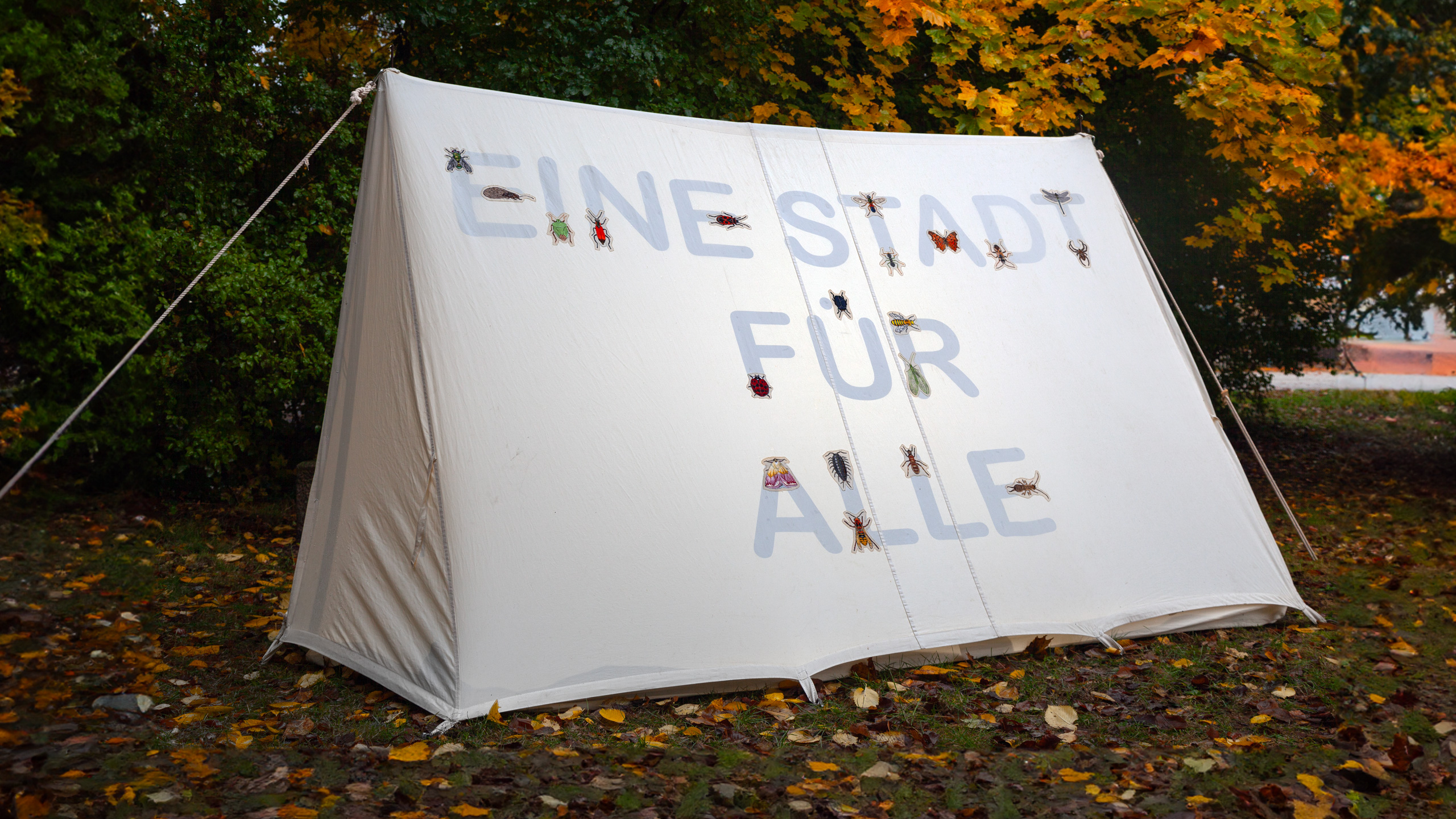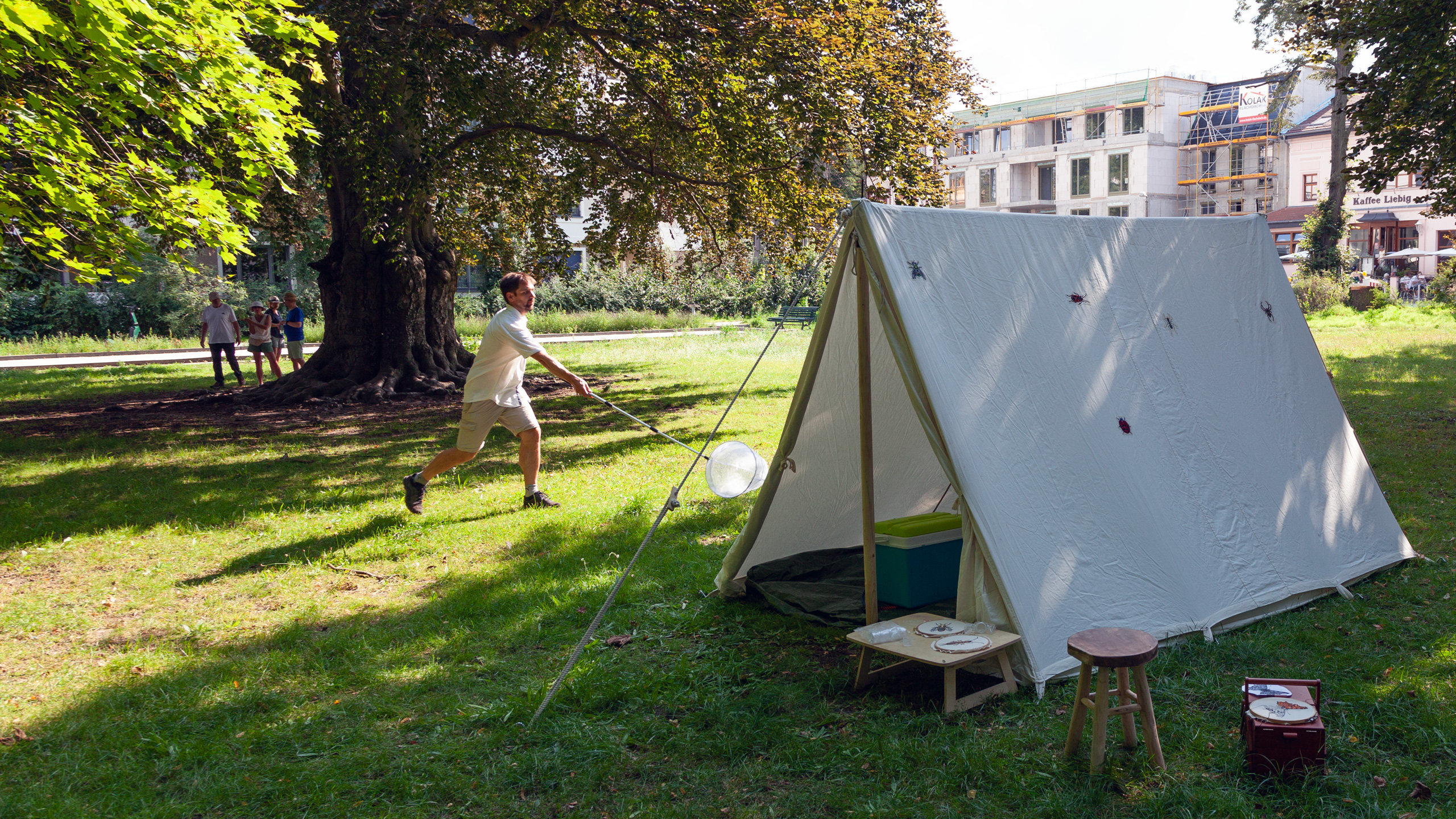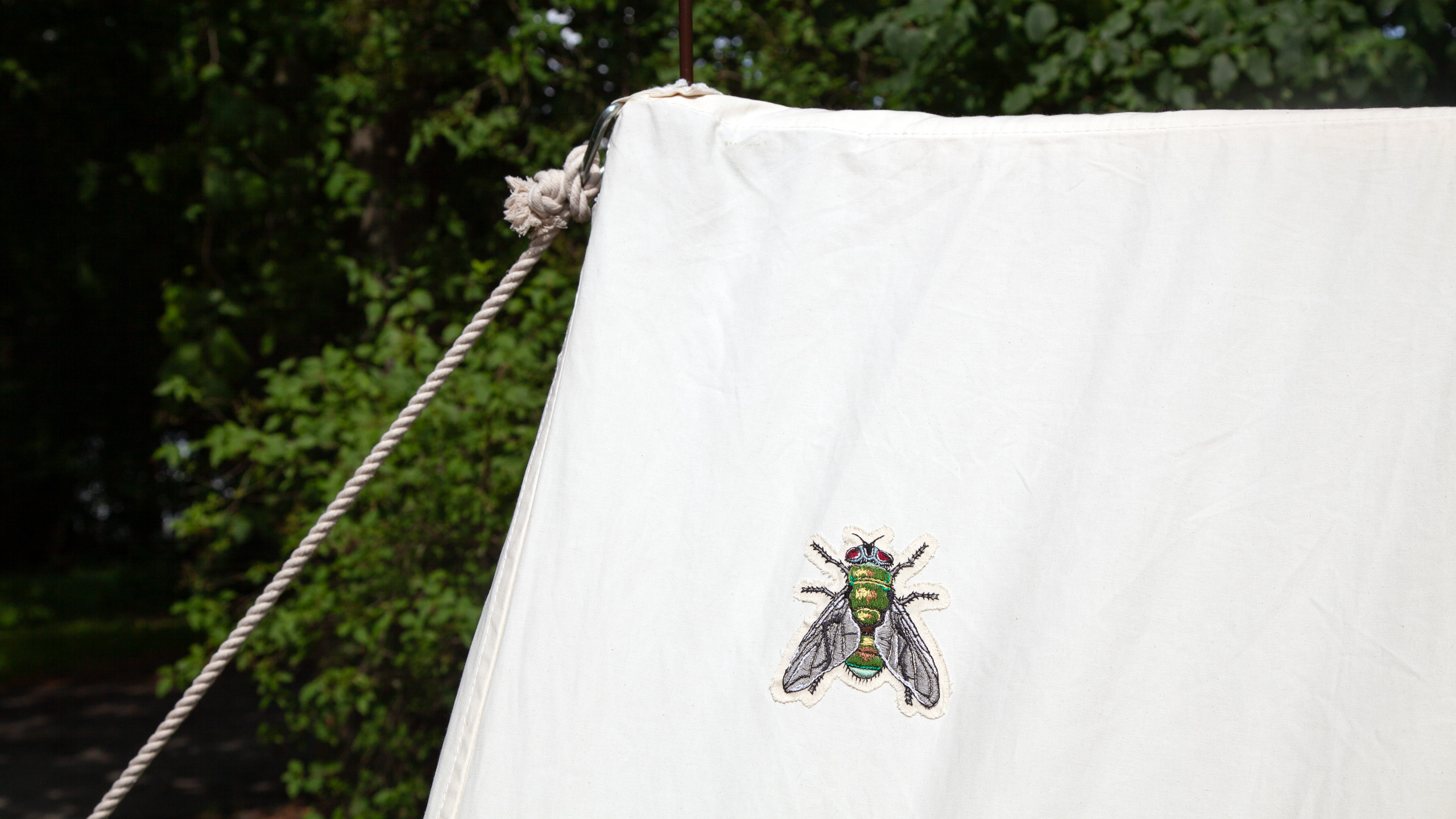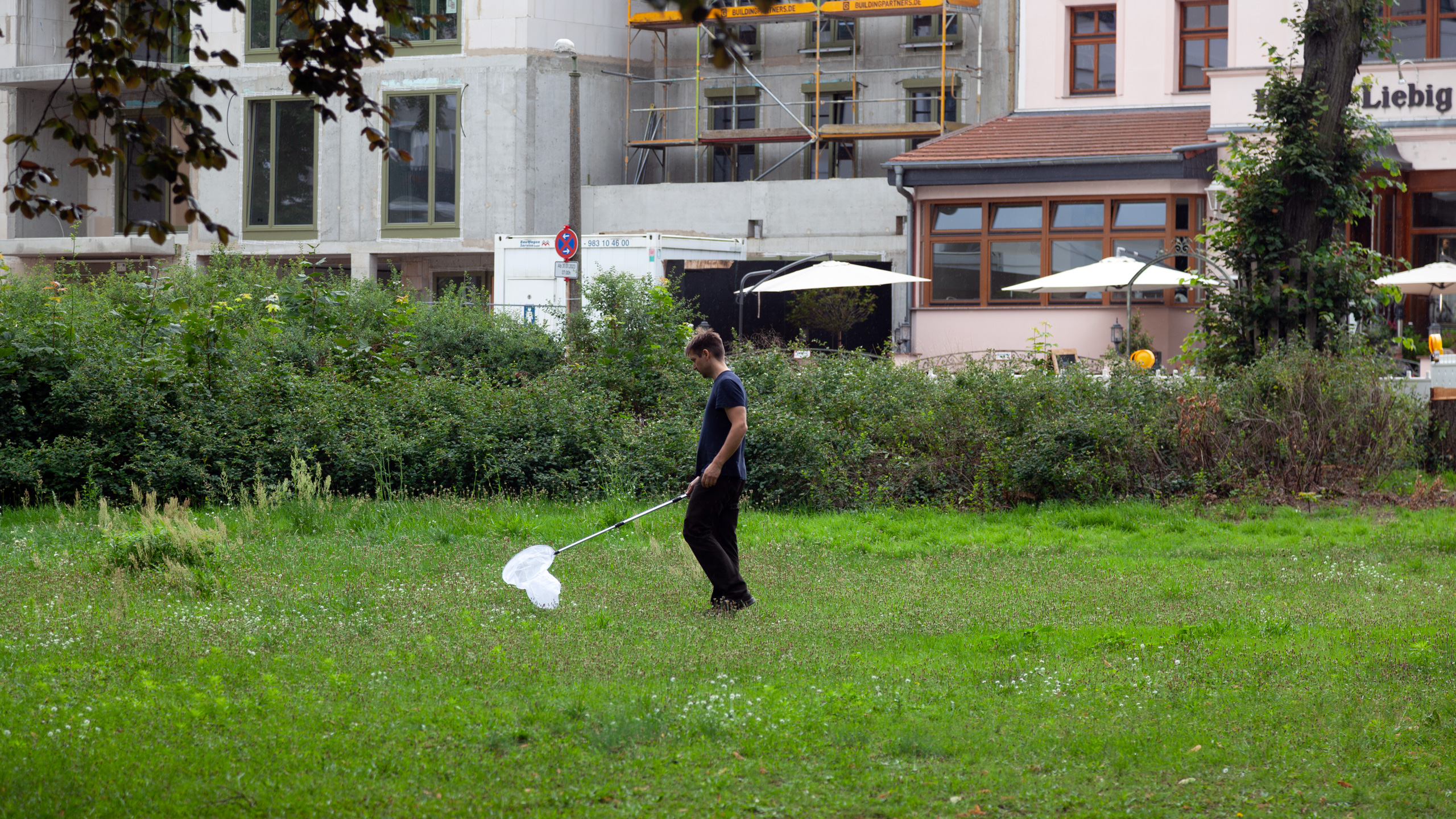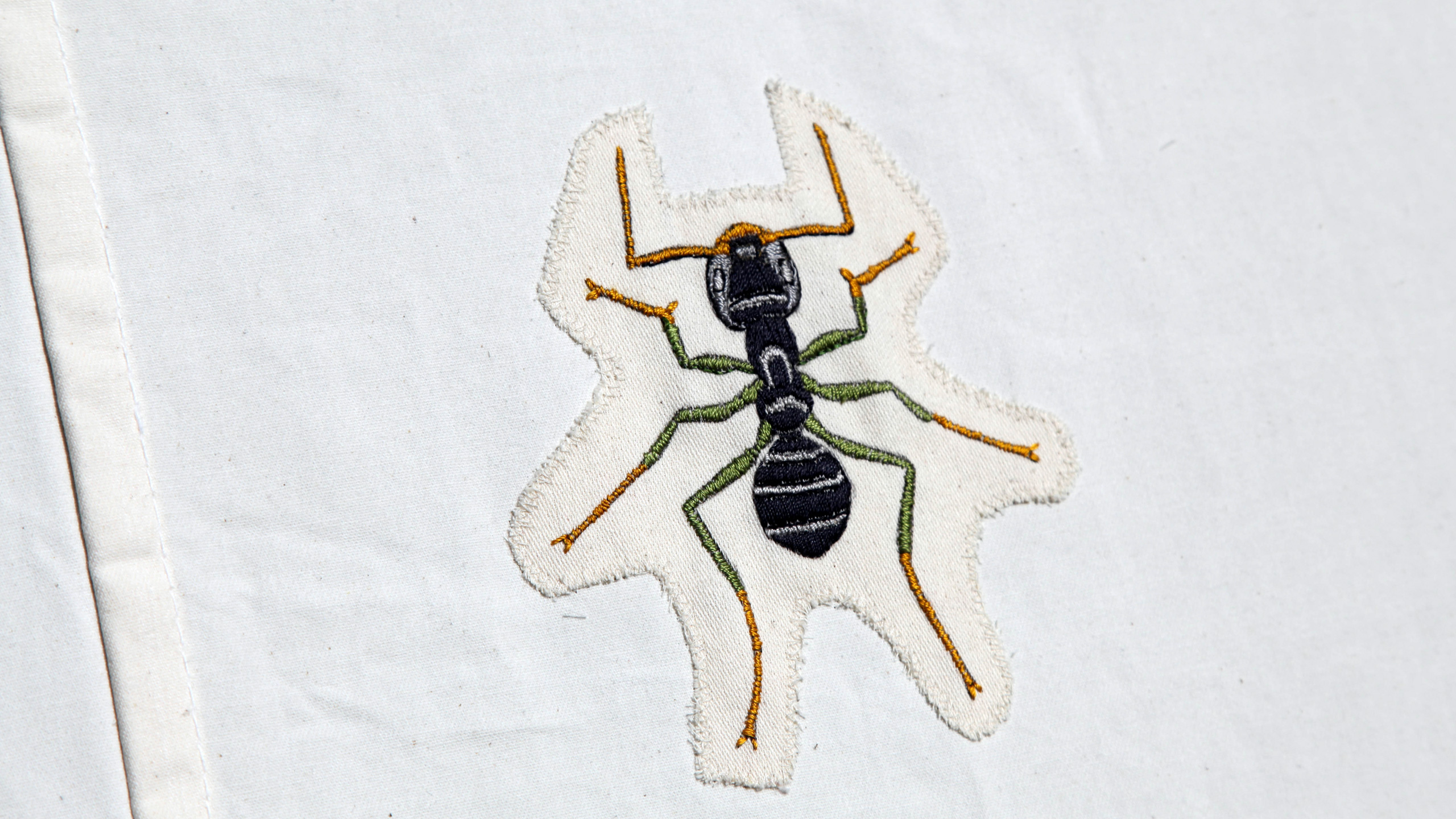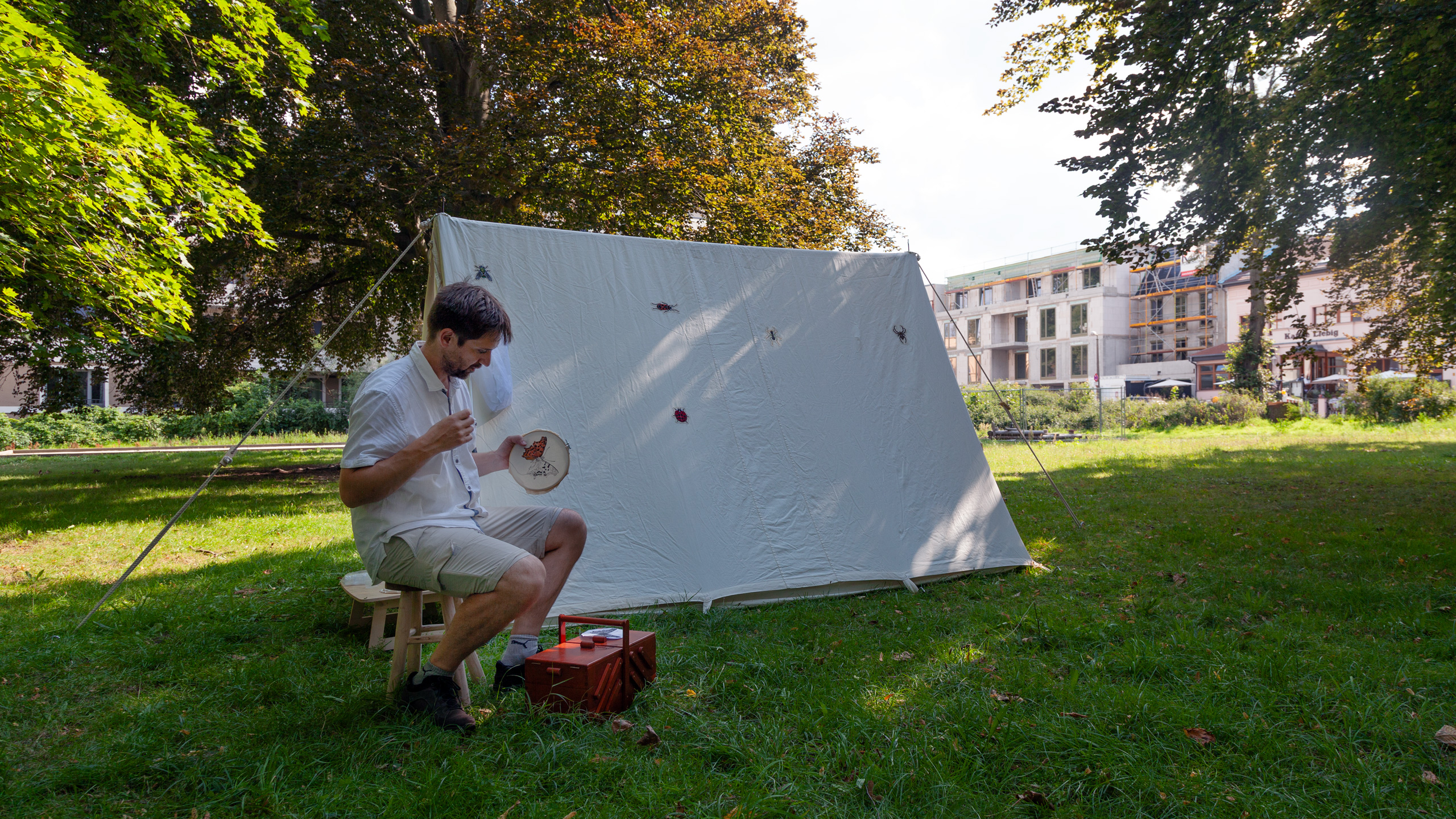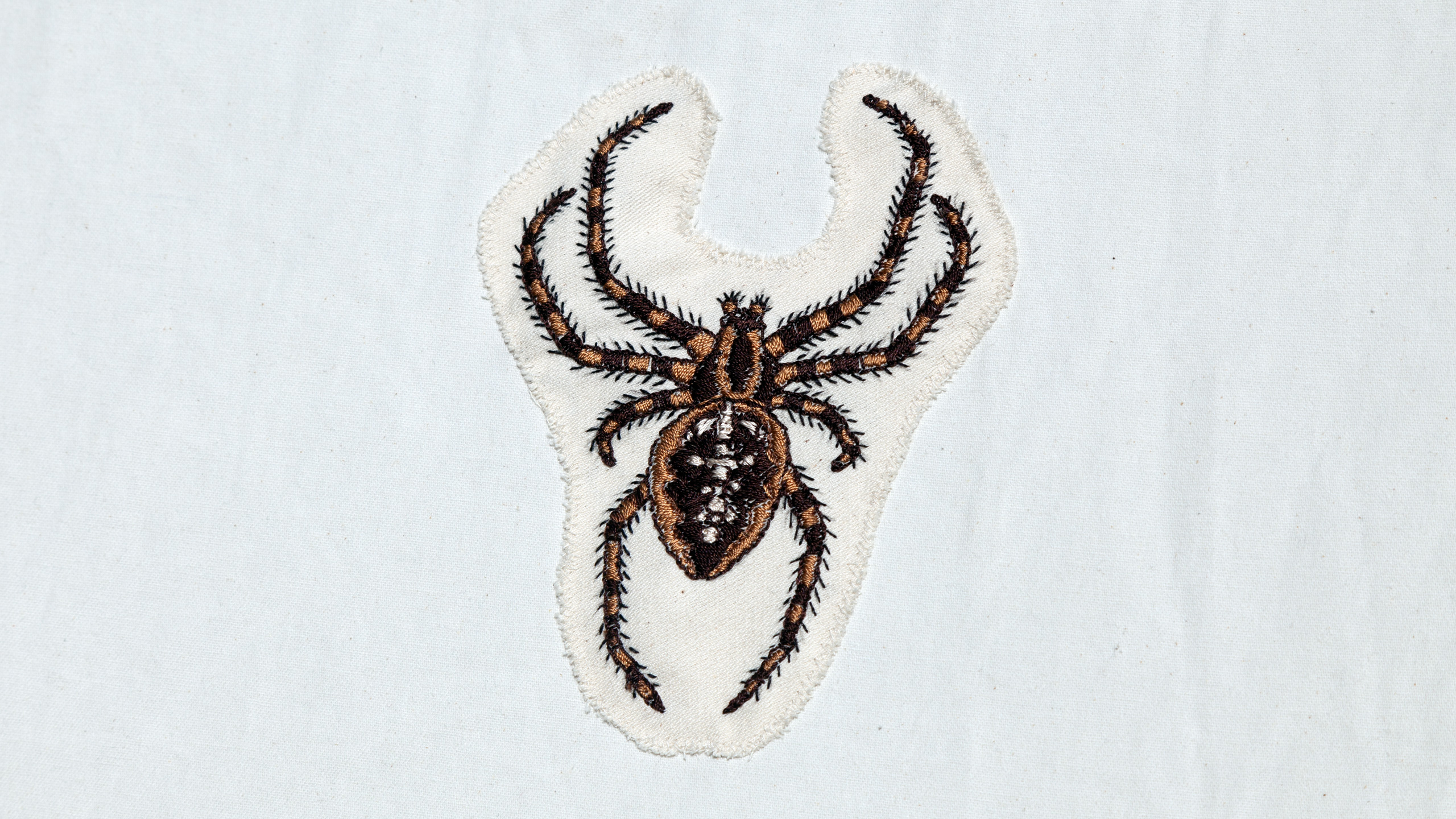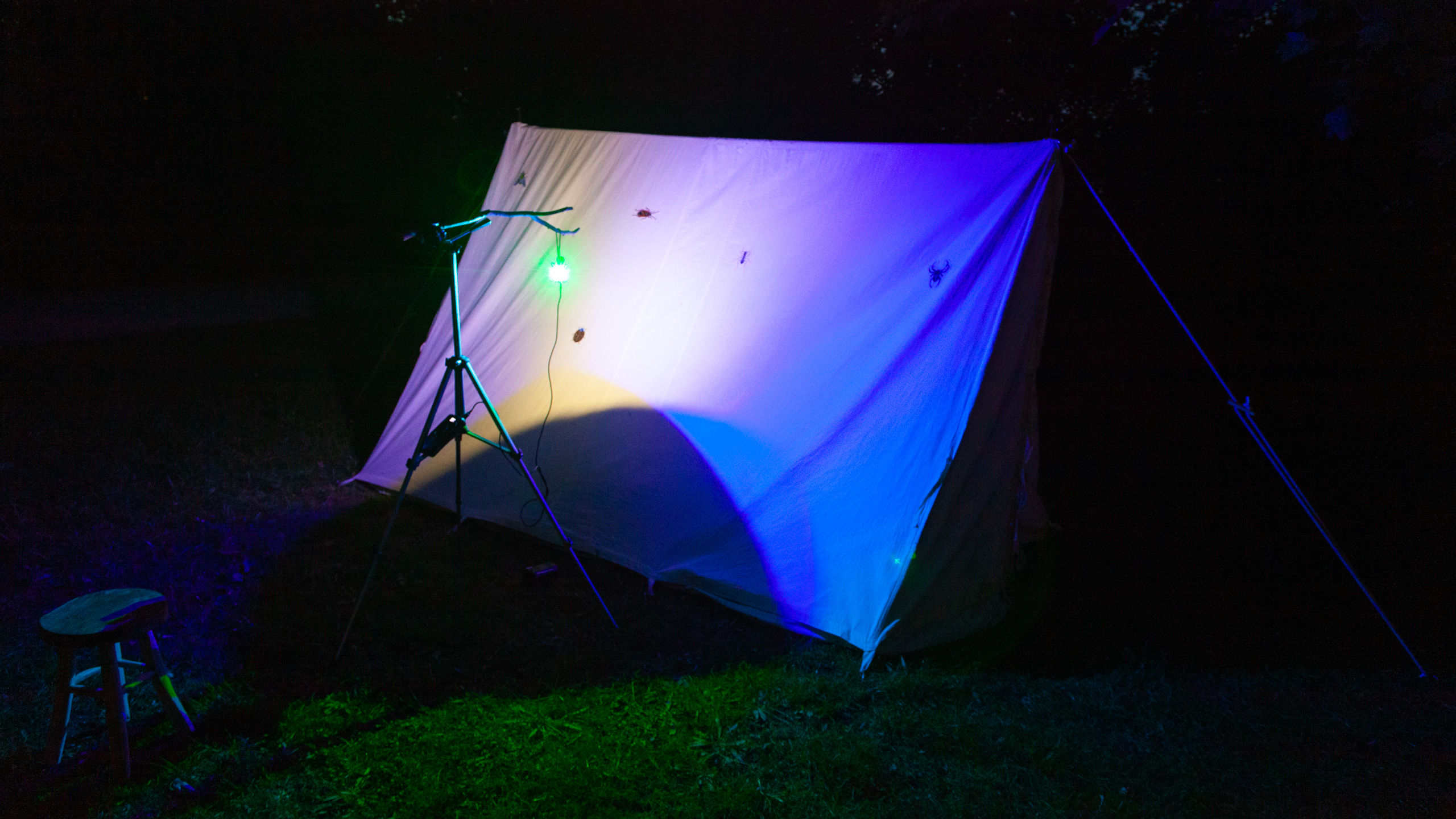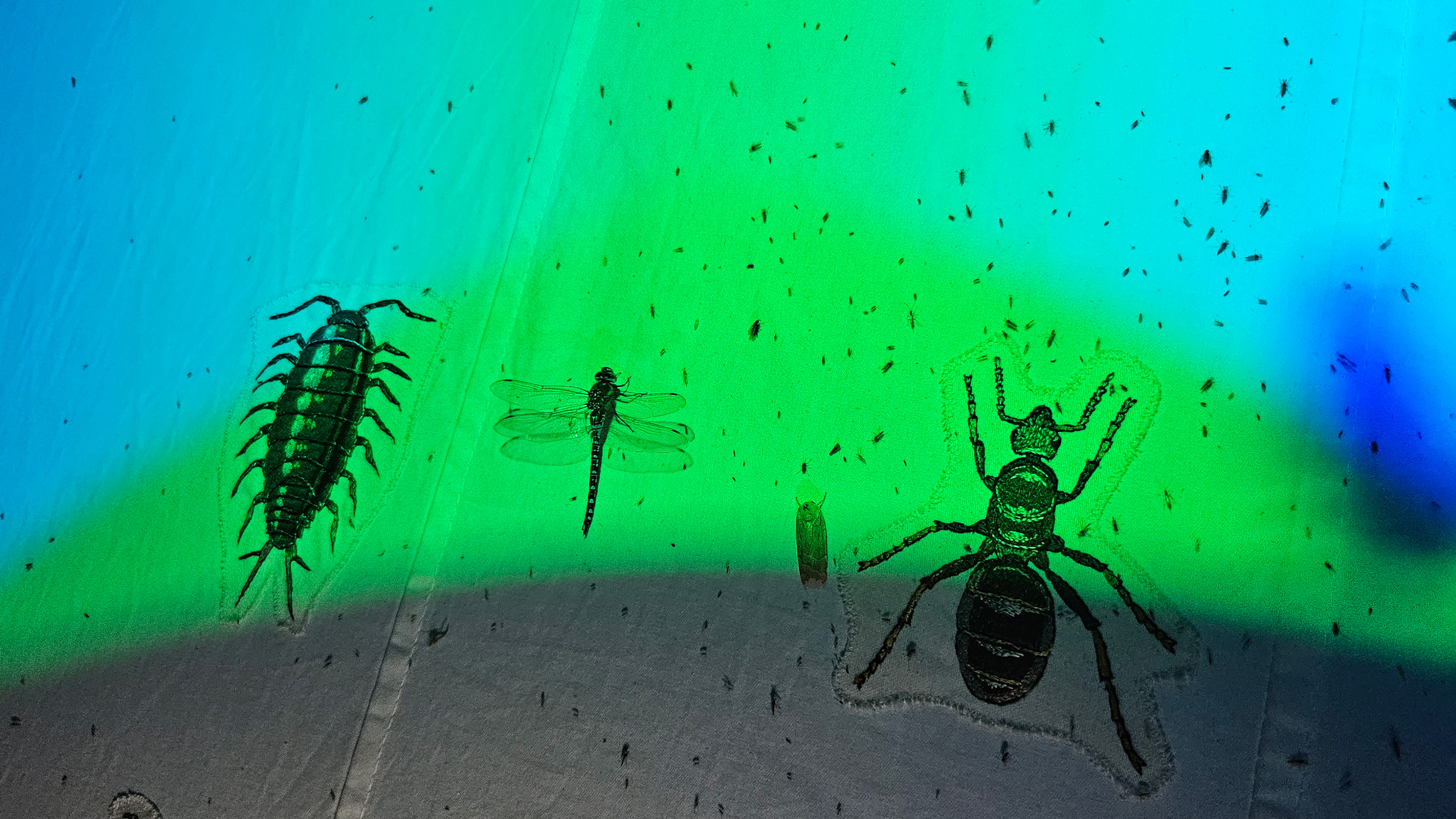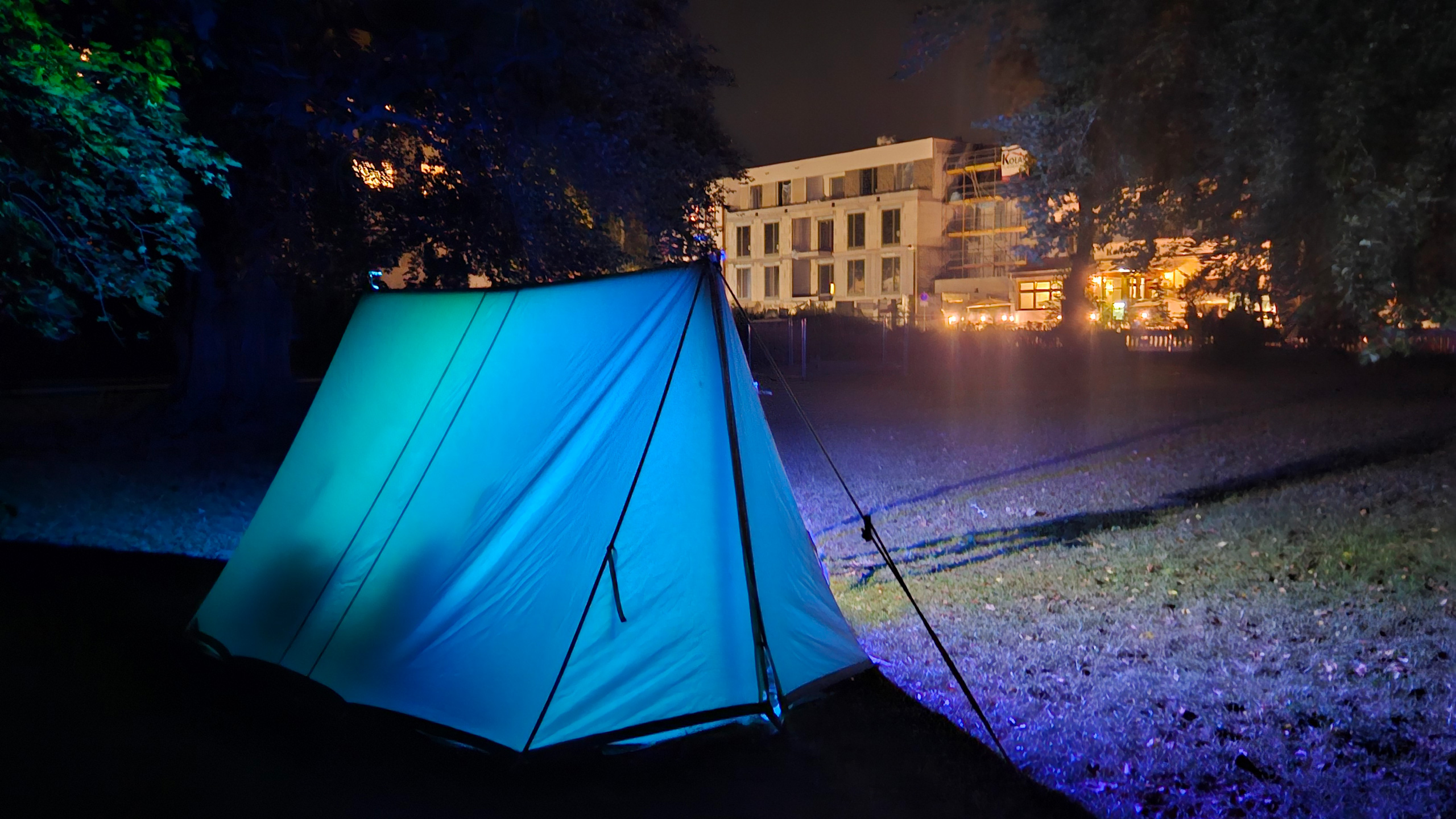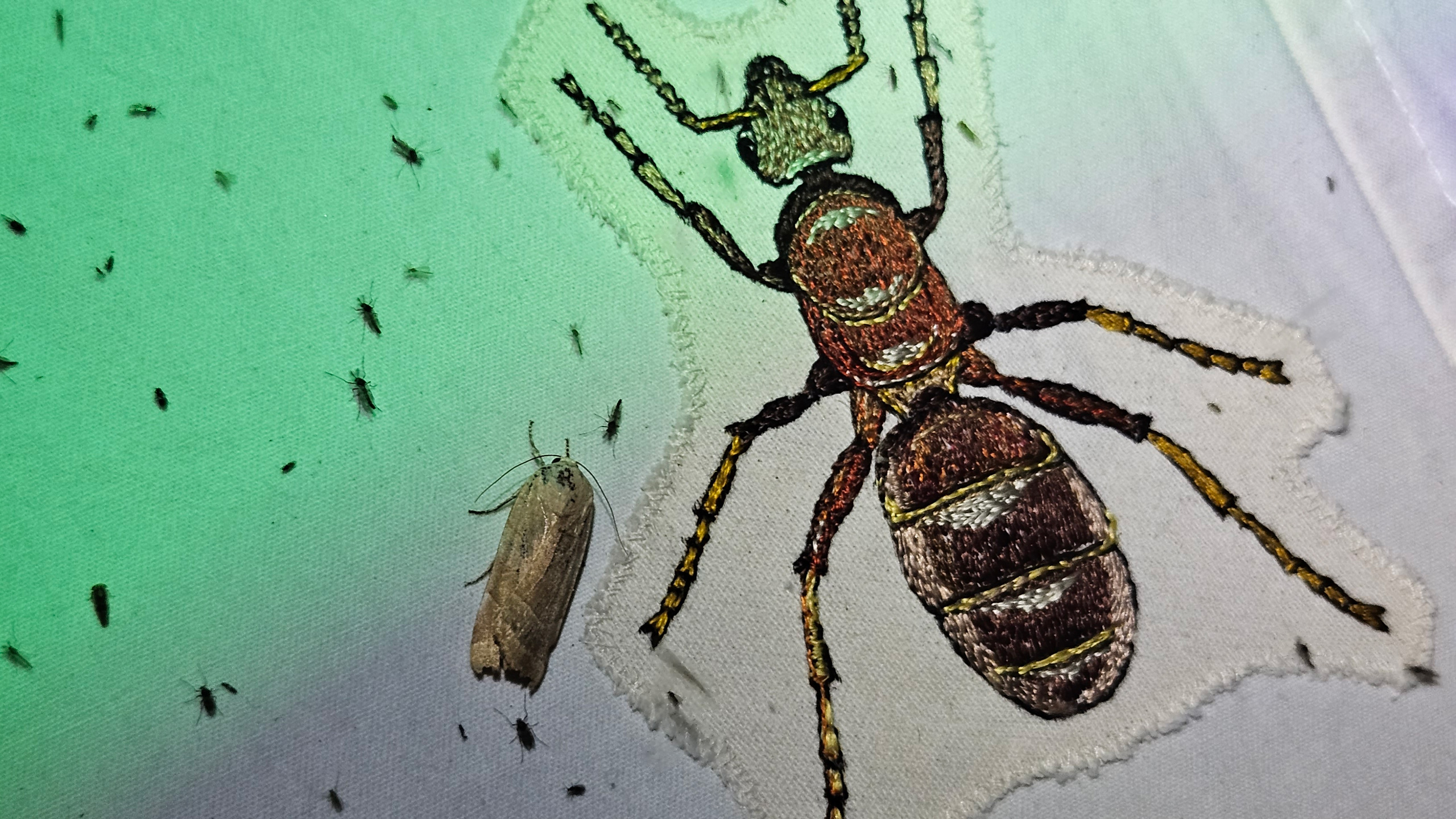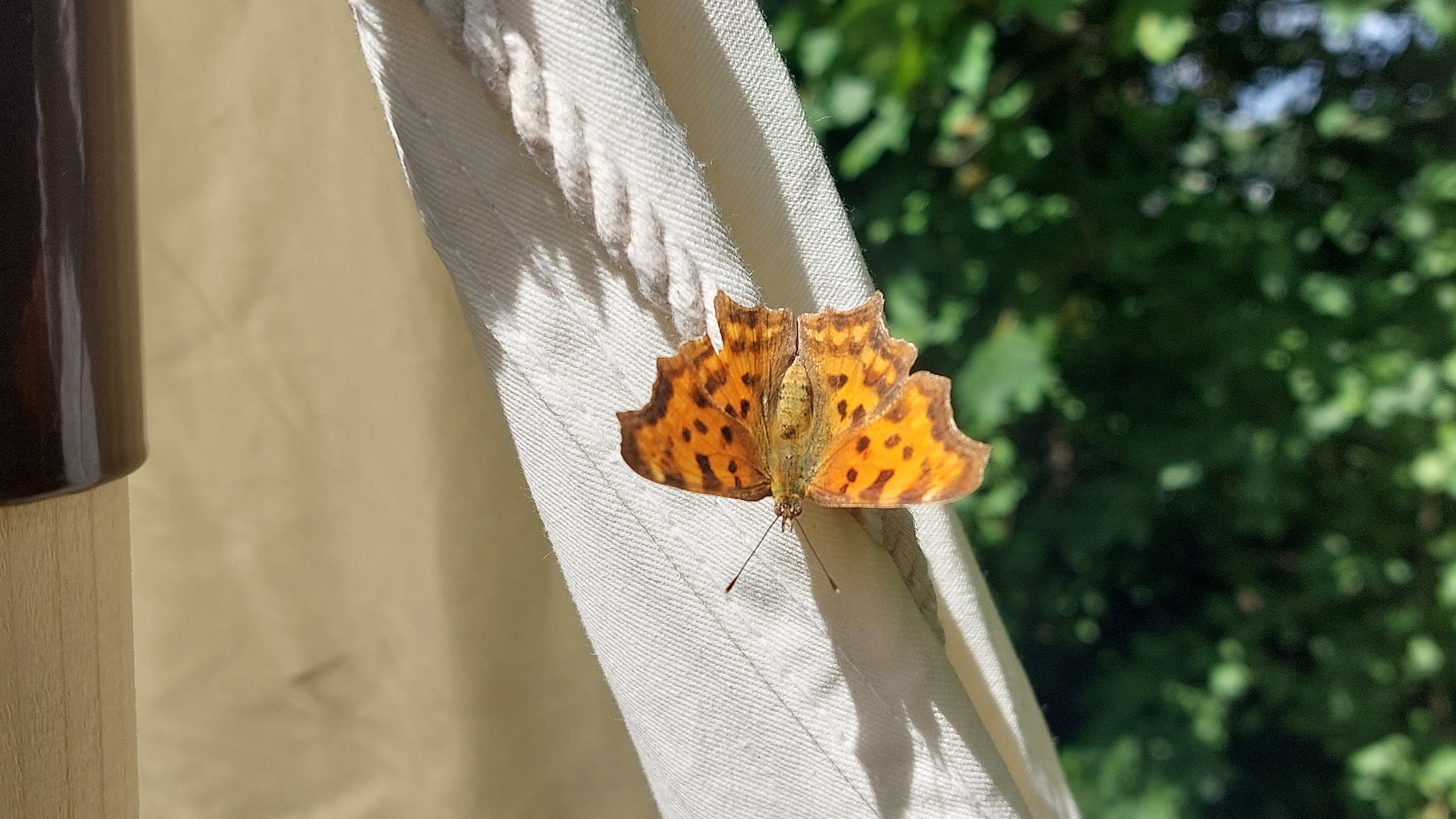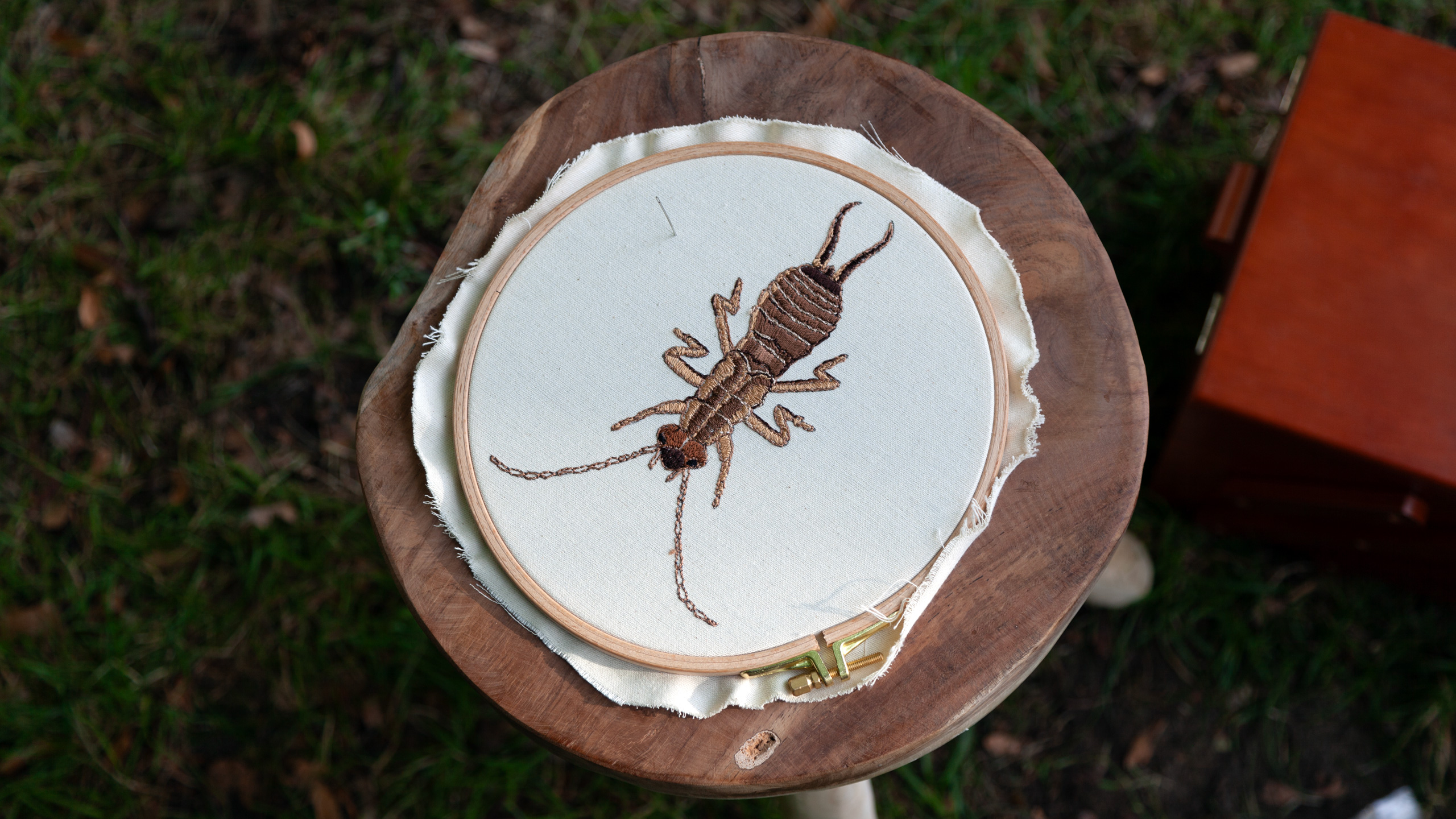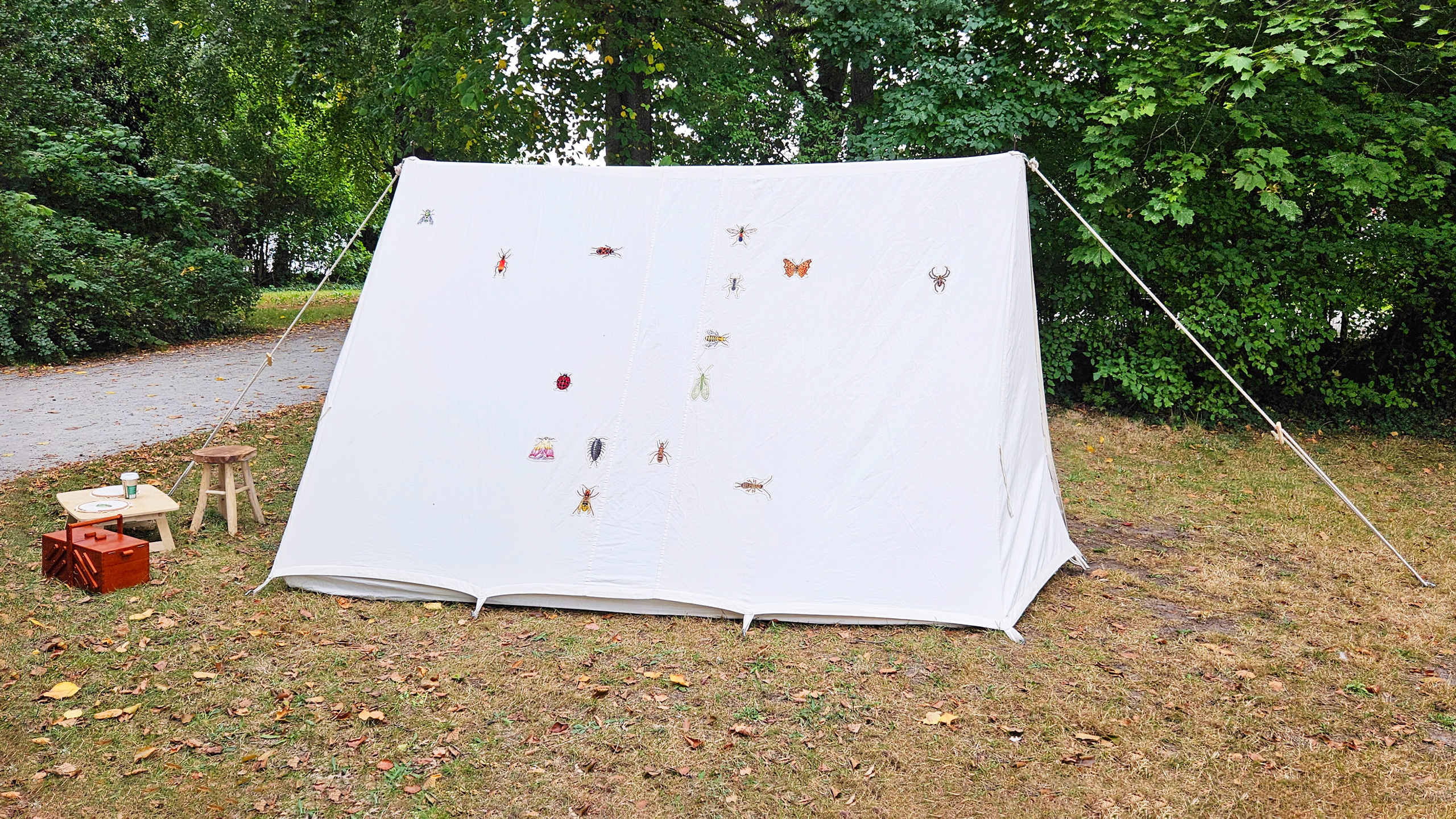(German for ‘A City for All’) travels back to the 18th century when cotton and silk farms formed the beginning of Grünau, a district along the Dahme river in the south of Berlin. Much of the waterside properties are privatised and only a few places still provide access to the river. The work took place in one of such rare public spaces (Park an der Anlegestelle), from where the ecological as well as the social conditions were documented. The results of the inventory were made visible in the park itself. In reference to the original inhabitants, a replica of a historical cotton tent was decorated with insect embroideries made of silk. They were placed in a specific pattern on the canvas, in such a way, that, over time, the title of the work appeared: Eine Stadt für Alle, a slogan, commonly used during anti-gentrification demonstrations in Berlin and which, in the work, can be understood from both a human and a more-than-human perspective. The interactions with passers-by were documented and used for a sound piece, which was played from inside the tent. In the end, due to the time consuming nature of the medium, only parts of the title were covered.
Project info
- Date: Multiple days, 2023 (ongoing)
- Place: Park an der Anlegestelle, Grünau, Berlin
- Acknowledgement: Jana Slawinski (Amt für Weiterbildung und Kultur, Treptow-Köpenick), Jörg Freyhof (Museum für Naturkunde), Nils R. Schultze (Ortsverein).
- Media: Embroidery and Insect counting
- Embroidery assistance: Marcela Pappen
- Material: Cotton and Mulberry silk
- Funded by: 'Draussenstadt', BESD II- project funding, district Treptow-Köpenick
- Narration: Marcela Pappen
- Insect survey: Inaturalist
- Soundpiece: Soundcloud
